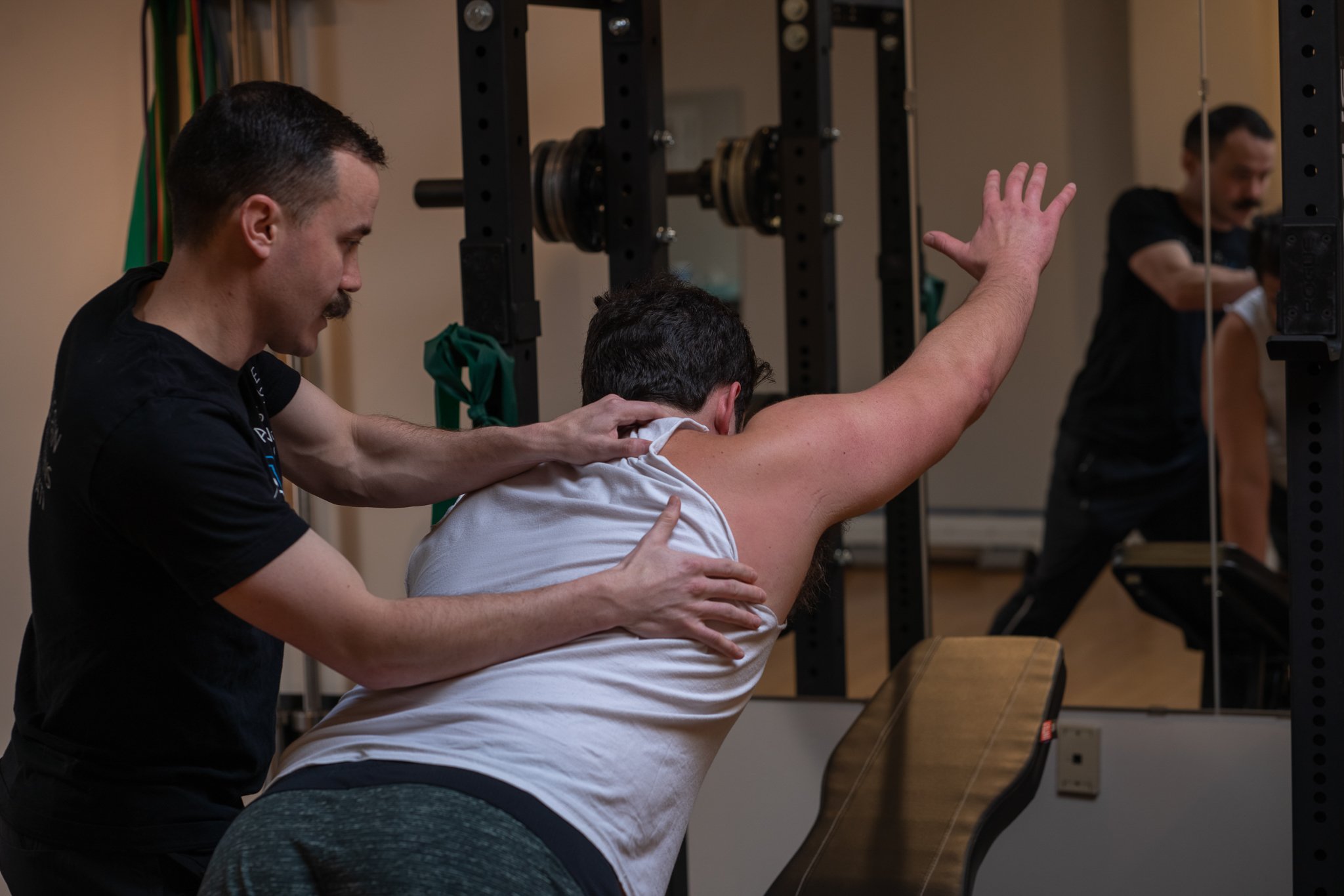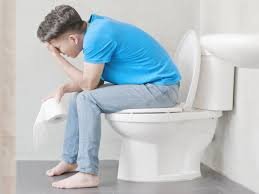Absolute Kinetics Physical Therapy Blog
How does virtual physical therapy work?
When most people think of physical therapy, they picture a clinic full of patients doing exercises, sitting with hot or cold packs, and/or therapists using manual treatments like scraping, dry needling, cupping, or taping. So what is “virtual” physical therapy, how does it work, and is it effective?
Is Your Efficiency Hurting Your Ability to Do What Matters Most? Guest blog post by Dina Haggenjos
Have you noticed the satisfaction of checking off a to-do list item doesn’t feel as potent, as satisfying as it used to be? Maybe you have lists, you have post-its, a calendar, some are even color-coded …but despite all this, and your ability to rattle off what your child wants for their birthday, where THE favorite toy is in the house, what your partner’s greatest struggle is right now, and how much leftovers are in the fridge you find yourself quietly wondering “Why can I not do the things I want to do? Why is it so hard for me to carve out time for myself? Am I even on this list anywhere?! How am I ever going to reach the goals I have for myself when I can’t imagine adding one more thing?”
Healthy Bladder Habits/Tips
Urinary urgency, frequency, and other urinary dysfunction can occur in all genders, and there are usually a few factors involved. As physical therapists, we are always looking at muscle function and how it affects the body. If you see a pelvic floor physical therapist for urinary dysfunction, it is certainly important that they assess how your pelvic floor muscles are functioning and identify any muscle tightness, weakness, or issues with muscle coordination. However, looking at bladder habits and bladder irritants can also be key in optimizing bladder function.
Why treating both orthopedic and pelvic floor conditions is key
“You need to niche down in business”. This has always felt like a nearly impossible task to me as an orthopedic physical therapist. The body is all connected: how could I possibly specialize in one region, population, or diagnosis and not be doing a disservice to my patients!?
Learn More About Our Coaching Services
As Absolute Kinetics continues to grow and expand, we are so excited to announce our new coaching services! These services will allow us to expand our reach to clients who are not local to our offices. There are several coaching services we are offering, including run coaching, pregnancy and postpartum coaching, pelvic health coaching, and fitness and injury prevention coaching.
Digging into DOMS! What is Delayed Onset Muscle Soreness? Can it be treated or prevented?
If you have ever exercised, you probably have had local muscle soreness that pops up a few hours later and is very annoying. This soreness is commonly called DOMS which stands for Delayed Onset Muscle Soreness. A high school coach may have expressed this as a reward for good performance. I can still hear one of mine in my head saying, “pain is weakness leaving the body.” There is some truth to that, but we will dive into that later.
What is Vaginismus?
Vaginismus is a condition in which your body automatically contracts the pelvic floor muscles when penetration/insertion occurs. The pelvic floor muscles play an important role in sexual function and the ability to have pain free penetration/insertion. While this is deemed a sexual function “issue”, it is not limited to sex/intimacy, but can also include painful/limited insertion of things like tampons and painful pelvic exams in general.
Am I Fueling My Lifestyle Appropriately? Nutrition View from a Doctor of Physical Therapy
You may be wondering, “what is a Physical Therapist interested in nutrition for?” As a direct access, cash basis Physical Therapist I care and look at the whole person! How we eat is how we fuel all the activities and movements that we want to do! Different activities require very different nutritional intake to optimize performance and reduce injury risk. That means marathon runners should have different intake pattern compared to power lifters. Both may have very different nutrition requirements compared to a 30+ working dad who only gets to the gym 3-4 times per week (if I am being optimistic!).
Skill Update: Dry Needling and How It Fits Within the Practice
Resolving trigger points is a crucial part of attaining good biomechanics. Trigger points or “knots” in muscles can cause tissue damage and dysfunction. This damage and dysfunction can limit biomechanics and cause issues in muscle and nerve performance.
How Does the Pelvic Floor Affect Bowel Health?
Yes, Your pelvic floor can be messing with your bowel movements! While it’s something people often don’t like to talk about, pooping is an important and healthy part of life. Whether having a bowel movement is painful and/or infrequent, we’re usually only met with advice to eat more fiber, drink more water, and eat more vegetables. While these tips are important for a healthy system in general, it is not the whole picture.
Are Your Joints Ready for Spring?
Spring is almost here and along with it all the great outdoor activities that come with increased sunshine and warmth! Whether you hike, garden, or are looking to throw a baseball, here is a warmup routine with a twist to prepare your body to move!
What is Dry Needling?
Dry Needling is a technique used by physical therapists and other practitioners in order to target and influence the myofascial system. The myofascial system is a complex network made up of muscles and fascia, as well as nerves, blood vessels, and the lymphatic system. When there is tension and restriction in these structures, it often leads to a decreased level of blood flow and function. This in turn heightens our nervous system’s response by increasing our perception of pain in the area. This causes us to be in this cycle of pain, tension, decreased blood flow, and more pain. Techniques such as trigger point dry needling are a great way to directly release the tension and break the cycle.
Do you get pain during or after running?
Running has a lot of moving pieces (no pun intended) that are slightly different for each of us. Some of us are natural forefoot runners, others are natural heel strikers. Some of us use a lot of arm swing to facilitate acceleration and others have a rigid arm pattern, propelling entirely from the lower extremities. Our bodies have wonderful individuality and variation which means our running patterns are individual as well. With different running styles come different muscle and energy requirements and different risks for varying aches, pains, and injuries.
The Connection Between Pelvic Floor Dysfunction and Hip Pain
When people think of pelvic floor issues, it often involves symptoms such as urinary incontinence or pain with intercourse/sexual function issues. There are many more connections we can make in the body to the pelvic floor, including the hip. The hip joint is connected to the pelvis and works to provide stability and movement to the body.
Exercise and Lifting During Pregnancy
For far too long, pregnant people have been treated differently. They’re met with numerous limitations and advice on the things that they “can’t” do. While some pregnancies do need these limitations, most healthy pregnant people only need to make specific modifications throughout pregnancy and can actually continue doing the things they like to do, especially lifting.
Why Should I See a Physical Therapist First for Low Back Pain?
Low back pain is very common, and is the leading cause of activity limitation and work absence throughout much of the world. Individuals who have experienced activity-limiting low back pain often experience reoccurring episodes, and the prevalence of chronic low back pain has also significantly increased. Current research does not support a definitive cause for initial episodes of low back pain, and risk factors associated with low back pain are multifactorial, population specific, and only weakly associated with the development of low back pain (therefore, it is hard to "prevent" low back pain, as there are many factors that play a role!).
The Link Between Neck Pain and Headaches
There are several different kinds of headaches, including migraines, tension headaches, and cervicogenic headaches. Each different type of headache has different causes and treatments. It is important if you suffer from chronic and frequent headaches to be evaluated by a qualified medical professional to determine which type of headache you are experiencing, and what course of treatment may provide the best chance at relief.
Do I Need an X-Ray or MRI Before Physical Therapy?
A common question we hear as Physical Therapists - how are you going to treat me without seeing my MRI? (Or variations of this - why do I need to see you before I have an MRI? Don’t you need a diagnosis to treat me? Etc). To answer this question, we need to start with what we actually look at during our Physical Therapy assessment, and how that guides our treatment.
What is Visceral Manipulation?
Visceral Manipulation has been found to be beneficial for many disorders, including digestive disorders, acute and chronic pain and injury, women's and men's pelvic health issues, musculoskeletal disorders, emotional issues, and more. This treatment approach evaluates and treats the dynamics of motion in relation to organs, membranes, fascia, and ligaments. The goal of Visceral Manipulation is to improve awareness and communication in the body through gentle manual techniques to the organs.
The Answer to Constipation is Not Always Fiber and Laxatives
Nearly 30% of the US population experiences constipation. While some causes involve diet, hydration, stress, and even which medications you may be taking, an often-overlooked source is the function of the pelvic structures themselves.




















